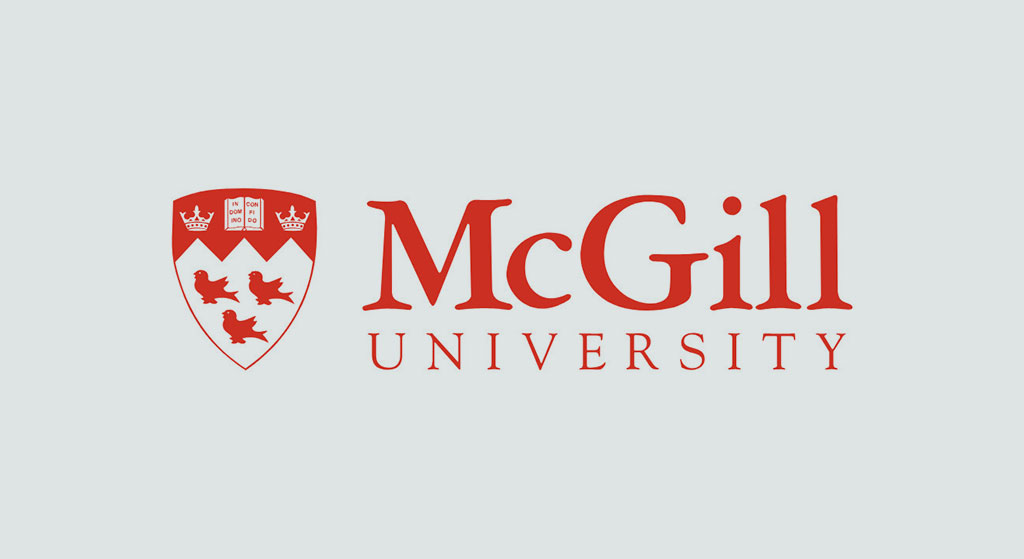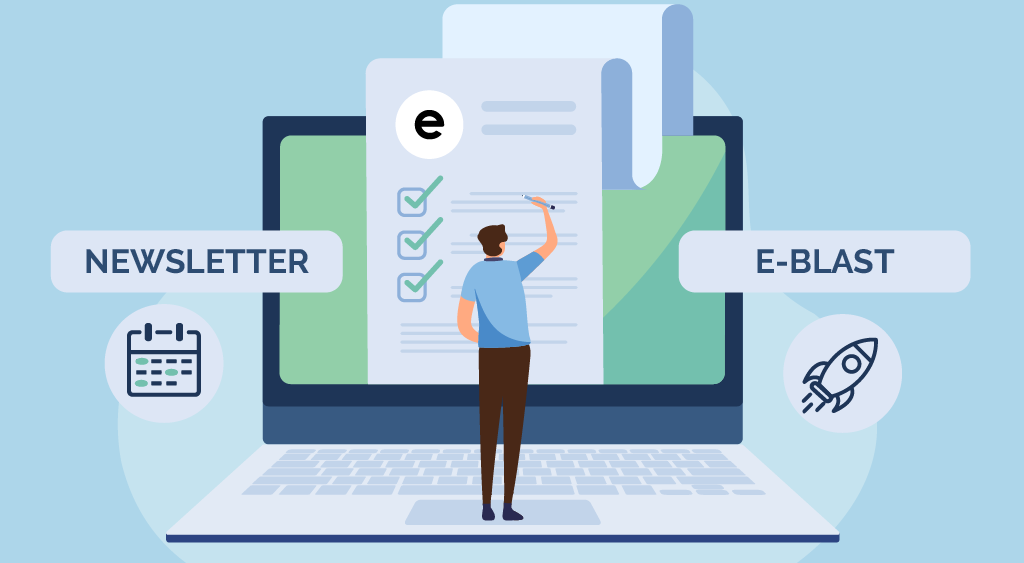Crafting an effective higher education marketing and communication strategy is no small feat. With multiple stakeholders — including students, faculty, staff, and alumni — and dozens of faculties and departments, there are a lot of moving parts. It takes clear vision, excellent planning, and well-built tools for communicators to deliver effective communication in a timely fashion.
Multiple stakeholders mean divergent goals, too. On any given day, communications professionals in post-secondary settings may be onboarding new students, publicizing faculty research, communicating with academic and operations staff, and engaging alumni. Newsletters, internal magazines, direct email campaigns, multiple websites, and interdepartmental communications are all part of the job.
Try Envoke today: Create a free trial account.
Email for communication, not lead generation.
- Includes ALL Envoke features.
- No credit card needed for trial.
- Free, unlimited support.
- Free coaching call with tech support (not sales).
This blog will explore the components of an effective comms strategy in higher education, with a focus on digital marketing. We’ll discuss the right tools, the details of effective email marketing, and the unique needs of Gen Z students as well as the benefits of executing a comprehensive higher education marketing and communications strategy.
Topics We Explore:
- Understanding Your Stakeholders
- The Best Email Marketing Platforms
- Case Study: McGill University Choose Envoke
- Best Practices for Crafting Effective Emails
- Frequency and Timing: Finding the Right Balance<
- Unify Branding Across Departments and Faculties
- Analyzing and Improving Communication Efforts
- Ask for Feedback
- Considerations When Marketing to GenZ
- Benefits of a Comprehensive Higher Education Marketing and Communication Strategy
Digital Marketing in Higher Education 101
1. Understanding Your Stakeholders
When it comes to communication strategy in higher education, one size does not fit all. Each stakeholder group has its own unique needs and preferences, which should guide your approach.
Students:
Current students require timely and relevant information to succeed in their academic journey. Emails about upcoming deadlines, events, academic support services, student benefit packages, and campus news are essential. Personalization is important here, as students are more likely to engage with content that feels directly relevant to them. Use a robust tagging or email list system (Envoke can help you here) to group students in a relevant way. Consider supporting your e-blasts with SMS notifications or social media reminders. Email is essential, but it isn’t always the first place these digital natives look, even for important information.
Alumni:
Alumni are a vital part of any university’s community, and maintaining strong alumni engagement is crucial. Some great comms content might include updates on university advancements, a spotlight on former students’ achievements, personalized event invitations in their town or city, and opportunities to give back through donations or mentoring. The key is to make your alumni feel valued and connected to their alma mater.
Academic Staff:
Communication with academic staff should be clear and consistent, ensuring they are informed about policy changes, research opportunities, and professional development events. Engaging staff through regular updates — this is an excellent place for a monthly newsletter — fosters a collaborative environment and keeps them aligned with the university’s goals.
Non-Academic Staff:
Engaging non-academic university staff requires clear and purposeful communication that recognizes their crucial role in the institution’s daily operations. Regular updates on policy changes, training opportunities, and departmental news can help staff feel informed and valued. By fostering a sense of inclusion and aligning communication with their specific needs, the university can strengthen its support system and enhance overall efficiency.
2. Best Email Marketing Platforms for Higher Education Marketing
Email marketing platforms like Mailchimp are designed for sales and leads, but we’re discussing internal marketing and communication, not lead generation. Envoke is an email marketing platform purpose-built for communication, with all the features communicators need to segment their audiences, personalize messages, automate campaigns, and analyze engagement. Its features are designed to help institutions maintain meaningful connections with their stakeholders through targeted and effective email campaigns.
Envoke’s Key Features Include
Robust Segmentation and List Management: Easily categorize your audience based on specific criteria like graduation year, faculty, full- or part-time status, or engagement level.
Mandatory Messaging: Fulfill legal or contractual obligations to send emails that contacts must receive, regardless of their subscription status, with mandatory messaging.
Personalization: Use dynamic content blocks to create a single email with tailored content that is displayed only to selected groups, enhancing its relevance and impact.
Multi-Department Options: Envoke’s email marketing platform lets you create multiple departmental sub-accounts that are controlled by a central administrative account. Departments communicate independently with their subscribers, and manage their lists and data, while the central account controls access, and permissions, and shares templates across your organization to ensure coherent branding.
Analytics: Monitor the performance of your campaigns in real-time, and adjust your strategy as needed.

Case Study: McGill University
One of Canada’s oldest and most prestigious educational institutions, McGill University ranks among the top 50 universities in the world. McGill relies heavily on email, sending over 8 million emails a year to communicate with 275,000 alumni, 40,000 active students, 6,750 administrative employees, and 3,500 academic staff.
Learn why McGill chooses Envoke to keep students and staff informed.
“It’s very efficient. Even though our user base has increased significantly in the past few years, our administrative load hasn’t.”
— Simon Labonne, McGill’s Digital Content Specialist
3. Best Practices for Crafting Effective Emails
The key to great emails is keeping things topical, friendly and personalized. These best practices will help:
Segmentation and Personalization
Using data to segment your audience allows you to tailor messages to specific groups for more successful higher education marketing. Personalized emails see significantly higher open and click-through rates—up to 29% higher, according to some studies. This is where Envoke’s robust segmentation tools shine, enabling you to create highly targeted campaigns that resonate with your audience.
Clear and Concise Content
Your emails should be clear and to the point. Craft a compelling subject line that grabs your reader’s attention and use friendly, straightforward language to convey your message.
Visual Appeal
Visual elements such as images, infographics, and consistent branding make your emails more appealing. Envoke’s easy-to-use design tools allow you to create visually engaging emails that maintain your university’s branding, making your communications both professional and memorable.

4. Email Frequency: Finding the Right Balance
More isn’t always better. Send too many emails and your audience will disengage. On the other hand, too few emails might leave stakeholders feeling disconnected.
Avoiding Overcommunication
Too many emails can lead to higher unsubscribe rates. Use analytics to monitor your KPIs and adjust your email frequency to find the right balance.
Optimal Timing:
Timing things right helps ensure your emails are opened and read. Adobe has a comprehensive overview of various studies, but you’ll need to discover what works for you. On average, research indicates that emails sent on Tuesdays and Thursdays tend to perform better, with peak engagement often occurring mid-morning. Envoke’s scheduling features allow you to send emails at the optimal time for each segment, considering factors like time zones and global alumni distribution.
5. Unify Branding Across Departments and Faculties
Every department in your institution is unique, with its own contacts and communications goals. However presenting your brand coherently and uniformly across departments is essential for building trust and protecting your organization’s profile. Any higher education marketing and communications strategy needs to address this.
Envoke’s multi-department capabilities help you protect your brand identity while allowing departments to communicate independently with their own subscribers, manage their own lists, and ensure their content reaches the right contacts.
These departmental sub-accounts are managed by a central administrative account that handles user access, billing, and branding elements like shared templates. This feature is a good fit for universities: it saves money, keeps your data safer, and ensures consistent branding across departments
6. Analyzing and Improving Communication Efforts
Analyze your email campaigns to identify what works and continue to iterate and improve. Monitor key metrics such as open rates, click-through rates, and unsubscribe rates to gauge the effectiveness of your emails. A/B testing different subject lines, content, and design elements can provide valuable insights. Envoke’s comprehensive analytics dashboard makes it easy to track these metrics and refine your approach to higher education marketing.
7. Ask for Feedback
Consider embedding surveys or polls in your emails or newsletters to gather insights directly from your audience. This not only helps you improve but also shows your stakeholders that you value their input. Social media is another great place to interact, ask for feedback, or simply sit back and listen.
8. Considerations When Communicating with GenZ
Communications professionals know that GenZ communicates differently. These digital natives grew up with smartphones, wearables, and virtual assistants and are at home with disruptive tech. They are almost completely mobile users and are eager to integrate new technology into their lives. The current generation entering post-secondary education has also come of age during a global pandemic, making their lived experience even more unique. It’s worth the effort to ensure your higher education marketing and communication strategies match their expectations. Here are some suggestions:
- GenZ grew up online and has a very conversational communication style. Use fewer directives and employ friendly language to share ideas and information.
The global pandemic disrupted the high school years for many students and may have left gaps in their experience. Offer friendly, clear information about what to expect from life on your campus. - Be specific and detailed when sharing information about how to engage in campus activities. Include as much information as you can about times, dates, fees, and the size of any event. Consider adding a virtual component to events, too, where online participation is available. Share all this information on social media, too, and encourage interaction.
- Learn more about their needs. Hold focus groups and surveys, and engage heavily online to understand your students

Benefits of a Comprehensive Higher Education Marketing and Communication Strategy
It’s worth it, we promise! With a thoughtful higher education marketing and communication strategy, you can keep your students and alumni engaged and informed, and your information channels buzzing with events, activities, and ideas.
Showcase Faculty Research and Innovation
Chances are, your faculty is working hard, innovating, publishing, and pushing the boundaries of their field of study. This research attracts attention to your programs and raises the profile of your institution. Internal communications, alumni outreach, and newsletters across the board, where appropriate, are definitely places to share this good news.
Increase Alumni Engagement
According to the 2024 VAESE Alumni Relations Survey, 67% of higher education organizations say they struggle with alumni engagement. The same survey reports that well-planned content delivered in a timely fashion is 29% more likely to engage alumni than other benefits they may be offered. Find out what resonates with your community and get talking!
Streamline Interdepartmental Communications
With Envoke’s email marketing platform, your departments can operate independent sub-accounts, manage their own email lists, and send customized content to their own subscribers. Manage these sub-accounts with a centralized administrative account that controls templates and user access. You’ll streamline your communication software, save money, and ensure consistent branding across your organization.
Build A Stronger Culture
Colleges and universities thrive partly based on their reputations which are, in large measure, based on culture. Everyone wants a vibrant, dynamic campus environment that is rich with discovery, full of discussion and debate. Good planning can help you succeed.
Related Reading:
- Alumni Engagement Checklist: 7 Strategies That Work
- Email Marketing for Educational Institutions: 11 Strategies
- Better Post-Secondary Email Communication: 5 Practical Tips
- Email List Management Checklist: Great for University Comms Teams!
